Description/achievement of initiative
Tomorrow Water, an innovative environmental solutions provider with a vision of a “Clean and Beautiful World Beyond Waste”, contributes to the world via clean water & sanitation (SDG 6), affordable clean energy (SDG 7), industry, innovation, and infrastructure (SDG 9), sustainable cities and communities (SDG 11), and climate action (SDG 13).
Tomorrow Water Project (TWP) is a comprehensive system that converts sewage from a cost stream to a profit stream by integrating low-energy wastewater systems, AI-based value chain innovation, and rigorous resource recovery. TWP is contributing to the global paradigm shift toward digital transformation of the water and sanitation industries.
Implementation methodologies
In order to foster sustainable waste and sewage practices, Tomorrow Water believes that wastewater itself needs to be converted from a cost stream into a profit stream. TWP does this by recovering valuable resources from wastewater, including water, energy, proteins, and nutrients, making it more economically feasible to implement sustainable water and sanitation systems.
The goal of TWP is to build a sustainable waste and wastewater management system, integrating low-energy wastewater treatment, energy production and other crucial elements of modern infrastructure in one place. TWP’s systems feed off each other, minimizing wasted resources. For instance, the biogas facility provides energy for wastewater treatment, and the wastewater plant provides organic waste feedstock for the biogas plant.
TWP Stages:
TWP 1.0 (2016-2020), Development of Treatment Solutions: Development of individual treatment solutions with the goal of enabling wastewater treatment to become energy neutral. This will be done by developing energy-saving wastewater treatment technologies and by integrating energy production technologies such as thermal hydrolysis and biogas production into the same facility as the wastewater plant.
TWP 2.0 (2021-2025), Value Chain Innovation: On top of developing treatment solutions, TWP will incorporate design & engineering, construction, and operation to expand the scope of TWP. Even with an energy-neutral treatment solution, if the entire value chain does not have significantly reduced costs, it still remains inaccessible for many developing nations. Water AI and automation technologies can solve these challenges, which can immediately and inexpensively optimize wastewater treatment processes and negate the need for costly engineering work and operations, making the whole project more affordable.
Furthermore, in TWP 2.0, data centers will be incorporated into process. Data centers are sorely needed around the world as data processing requirements expand. The limiting factors for data centers in major cities are physical space, cooling capacity, and energy needs. By incorporating a data center on-site a TWP facility, IT capacity can be expanded for a region in a sustainable, affordable way because the transfer of biogas energy and cooling water between TWP facilities solve data centers’ traditional hurdles.
TWP 3.0 (2026-2030), Upcycling: Ultimately, TWP’s capacity to recover valuable resources including water and energy as well as high-value commodities such as keratin, antioxidants, and amino acids from the waste and wastewater stream will be expanded. Upcycling of resources will enable sewage treatment integration into the economic ecosystem as a supplier rather than a cost center, bolstering its long-term sustainability, especially in developing nations.
Arrangements for Capacity-Building and Technology Transfer
Tomorrow Water, as a private company, will fund the initial investment to complete early technology development work ourselves. Crucially, the individual technologies developed in TWP will also enable us to earn profits throughout the environmental engineering industry, thereby promoting the long-term financial health of the project. Tomorrow Water is already experiencing exponential growth in the commercial sector thanks to the success of our technology development efforts based on TWP 1.0. This growth gives us room to re-invest capital into the R&D required for TWP 2.0, wherein value chain innovation and Water AI/automation will be developed. We believe this is an effective way to build the capacity of this project and expand its scope while simultaneously enabling Tomorrow Water to grow as an organization.
In TWP 2.0, we are not only pursuing scale expansion, but also scope expansion. Bench scale technologies will be scaled up to pilot scale and demonstration scale, and finally to full industry scale. As an organization we have significant experience scaling up innovative environmental technologies in the water and wastewater space. However, it is beyond the scope of our core competencies to develop and deploy data centers in TWP 2.0. Therefore, we will seek partnerships to enable the implementation of data centers at TWP facilities in TWP 2.0.
To support the expanded scope and scale of TWP 2.0, we will apply for grants from international sustainability-focused foundations to collaborate with other technologies and services providers in areas of IT and engineering. Grants will be critical for the successful implementation of demonstration pilots in the field.
The UN SDG’s slogan of ‘Leave No One Behind’ is well-aligned with Tomorrow Water’s own organizational vision and strategic trajectory. We believe our sustainable environmental engineering solutions can benefit developed nations and developing nations alike because minimization of wasted resources is critical to environmental stewardship and long-term economic health, regardless of where a nation is in its lifecycle. We are purposefully targeting our wastewater treatment technologies for use in developing nations who need sewage system retrofitting, as our technologies are an effective solution for countries looking to adopt modern best practices in an affordable and environmentally sustainable way.
Tomorrow Water will share certain intellectual property (IP) with the global community with the goal of implementing TWP around the world.
Coordination mechanisms/governance structure
TWP is best understood visually – please visit ¬http://bit.ly/twp-datacenter for a diagram that helps explain how it is interconnected. As shown in the diagram, TWP has many complex components and requires significant coordination efforts between systems.
Once grant funding is secured, a separate non-profit organization (NPO) will be established to drive action. An advisory board will be formed to include industry experts and financial professionals to govern, oversee, approve and guide the TWP into the future. The established NPO will be the acting entity interfacing with TWP partners such as the foundations and agencies involved that help fund the deployment of TWP facilities, as well as the local governments under whose jurisdiction the TWP facilities will reside.
Once suitable grant funding is secured and the advisory board is created, Tomorrow Water (through the NPO established for TWP) will be able to determine the location, scope, and scale of its first demonstration pilots where the first TWP facilities can be built and tested in developing nations.
We hope to bring value to society not by the size, but by the impact of our solutions We hope to bring value to society not by the size, but by impact. In aligning our business to ESG management principles, we believe TWP will launch successfully, with technological advancements, strong governance, and collaborative partnerships that fall in line with our mission of making the world a clean and beautiful world beyond waste.
In aligning our business to ESG management principles, we believe TWP will launch successfully, with technological advancements, strong governance, and collaborative partnerships that fall in line with our mission of making the world a clean and beautiful world beyond waste.
Partner(s)
BKT, Tomorrow Water, Korean Association for Supporting SDGs (ASD)

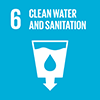

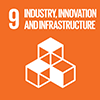
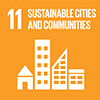
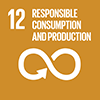
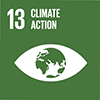
 December/2017
December/2017
 December/2025
December/2025
 January/2020
January/2020
 January/2022
January/2022
 Time-frame: January 2016 - December 2025
Time-frame: January 2016 - December 2025